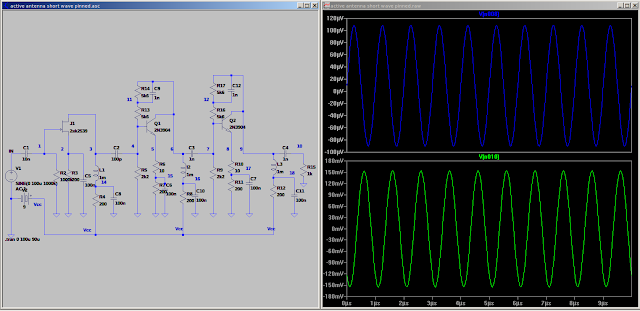We hear about the Q sometimes as though it is impossible to comprehend. I will attempt to help clear some of the allusion. The Q is simple a ratio of resistance and reactance. First a sim , then a test.
I made these coils and they were just laying on the bench so I will use one of them for the test.
The jig is quite simple except the circuit load the generator and the test is invalid. I tried using a 1K resistor to eliminate the loading. It sort of worked. It takes 10 volts in to produce 1mv across the test circuit.
without the resistor I get about the same input with 1 volt.
Using a transformer the results are much better.
I learned a couple of thing from this test.
1. The test signal should be less than 1 MHz. What range is your meter good for? My meters are rated 100KHz so I would look at using maybe 50KHz to 100KHz.
2. I show 2 caps in the circuit. One is adjustable and one is fixed. You can use the fixed to get close and then tune the circuit with the adjustable.
3. the RF transformer needs to be in range too. Watch the core rating.
NOW!
What about that Q. Examine the test circuit and you will find the input is in parallel with a coil and cap in series. The first meter monitors the resistor voltage. The coil and cap will have Er times Q volts across them. The voltage on the coil and the cap are 180 degrees out of phase. In a resonant circuit the coil charges the cap and the cap charge the coil. It is like a juggler passing his balls from one hand to the other. Look at the charge and discharge path for the series resonant circuit and you see the input signal is in series with it. So we have Es in series with and equal to (El - Ec). And this is Q in a nut shell. El can be equal to Es or it could be 100 times Es. What determines this value?
Circuit resistance does. If the coil reactance and resistance have a ratio of 100 the Q is 100 and the voltage gain is 100. How can this be? Remember the circuit has +jx and -jx values which are equal and therefore cancel. The current limiting factor in the circuit is resistance. Remember E=I*R. In a series circuit I is the same throughout.
E reactive is amplified by the coil based on the current limit the resistance establishes.
That's it.
The coil field builds and store energy limited by the resistance. (In theory it will take all the power source can supply.)
The coil field collapses and attempts to maintain the current limited by that same resistance. (Of course in practice we see losses but this where the elusive Q comes in.)
A purely reactive circuit would have a Q of infinity.
A circuit with the resistance equal to the reactance would have a Q of 1.
And so the journey to finding Q begins.


















































